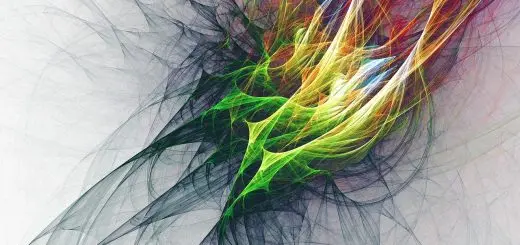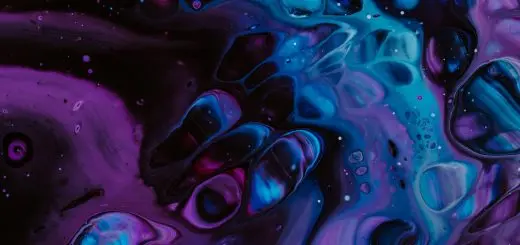What to Look for in a Professional Sketchbook

Looking for more amazing products? Check out our online store and explore our collection here! Happy shopping!
Before diving in, please note: This post is for informational purposes only. If you’d like to know more about how we approach topics, feel free to check out our friendly Disclaimer Page.
Hey there, amazing readers! 
We’re committed to delivering quality posts, and your support (even just sticking around despite the ads) means everything to us. So, bear with us, and thanks for helping us keep the good vibes rolling. Now, on to the fun stuff!
TRANSLATE BUTTON AT THE END OF THE ARTICLE
Introduction
A professional sketchbook is more than just a collection of blank pages; it’s a vital tool for artists, illustrators, and designers.
Choosing the right sketchbook can significantly impact your creative process, whether you’re sketching on the go or working on detailed illustrations.
This guide will help you understand what to look for in a professional sketchbook, ensuring you find one that meets your artistic needs.
Paper Quality
Weight and Thickness
The weight of the paper, measured in grams per square meter (gsm), plays a crucial role in how well the sketchbook handles different mediums:
Lightweight Paper (50-90 gsm): Ideal for quick sketches and pencil work, but may not hold up well to wet mediums like watercolors or ink.
Medium Weight Paper (90-150 gsm): A versatile choice that works well with a variety of dry and some wet mediums.
It’s thick enough to prevent bleed-through while still allowing for some texture.
Heavyweight Paper (150-300 gsm): Best for mixed media, including watercolors, markers, and ink.
This paper can withstand heavy applications without warping or bleeding.
Texture
The texture of the paper, often referred to as its “tooth,” affects how your drawing tools interact with the surface:
Smooth Paper: Ideal for detailed work, pen and ink, and fine lines.
Smooth paper allows for clean, precise marks but may not hold certain dry mediums like charcoal or pastel well.
Medium Texture: Offers a balanced surface that works well for both fine lines and textured marks, making it a good choice for versatile artists.
Rough Texture: Best for dry mediums like charcoal, graphite, and pastels.
The rough surface holds the medium well and allows for rich, textured marks.
Binding and Durability
Spiral Binding vs. Hardcover
The binding of your sketchbook affects its usability and longevity:
Spiral Binding: Allows pages to lay flat, making it easier to work across both pages.
However, spiral-bound sketchbooks may be less durable and can snag or become damaged over time.
Hardcover Binding: Provides better protection for your work and can handle more wear and tear.
Hardcovers are ideal for artists who travel or work in different environments.
They may not lay as flat as spiral-bound sketchbooks but offer a more polished presentation.
Perforated Pages
Perforated pages are useful if you plan to remove and display your sketches.
Look for a sketchbook with clean, easy-to-tear perforations that don’t damage the artwork when removed.
Size and Portability
Standard Sizes
Sketchbooks come in various sizes, each suited for different purposes:
Small (A5 or smaller): Compact and portable, perfect for sketching on the go.
Small sketchbooks are easy to carry but may not offer enough space for detailed work.
Medium (A4): A versatile size that provides a good balance between portability and workspace.
It’s large enough for detailed sketches but still easy to carry.
Large (A3 or larger): Ideal for expansive, detailed work.
Large sketchbooks offer ample space but can be cumbersome to carry around.
Portability
If you travel frequently or like to sketch outdoors, consider a sketchbook that is lightweight and easy to carry.
Hardcovers offer more protection but may add extra weight, so consider your typical working environment when choosing.
Paper Color
White vs. Toned Paper
The color of the paper can influence the overall look and feel of your artwork:
White Paper: The most common choice, white paper provides a neutral background that allows colors and lines to stand out.
Toned Paper: Available in various shades like gray, tan, or even black, toned paper adds a unique element to your sketches.
It’s great for working with white highlights and creating depth with minimal effort.
Acid-Free Paper
For artists concerned with the longevity of their work, acid-free paper is essential.
Acid-free paper resists yellowing and degradation over time, ensuring your sketches remain vibrant and intact for years to come.
Price and Brand Reputation
Budget vs. Professional Grade
While it’s tempting to choose the most affordable option, investing in a professional-grade sketchbook can significantly impact your work:
Budget Options: Suitable for beginners or casual sketching, budget sketchbooks may not offer the best paper quality or durability.
Professional Grade: Higher-end sketchbooks typically feature superior paper quality, better binding, and acid-free options.
They’re a worthwhile investment for serious artists.
Trusted Brands
Some brands are known for their quality and consistency in producing professional-grade sketchbooks:
Moleskine: Known for its iconic design, Moleskine offers a range of sketchbooks with smooth, durable paper.
It’s a popular choice among professionals for its reliability and sleek look.
Strathmore: A favorite among artists, Strathmore sketchbooks are available in various paper weights and textures, making them a versatile option for different mediums.
Canson: Canson offers a range of sketchbooks with high-quality paper that’s suitable for mixed media.
Their products are well-regarded for their durability and performance.
Conclusion
Choosing the right professional sketchbook involves considering factors like paper quality, binding, size, and brand reputation.
Whether you prefer smooth or textured paper, need a portable option, or want acid-free pages for long-lasting work, the perfect sketchbook is out there waiting for you.
By paying attention to these key features, you’ll be well-equipped to find a sketchbook that enhances your creative process and supports your artistic journey.

The Enlightenment Journey is a remarkable collection of writings authored by a distinguished group of experts in the fields of spirituality, new age, and esoteric knowledge.
This anthology features a diverse assembly of well-experienced authors who bring their profound insights and credible perspectives to the forefront.
Each contributor possesses a wealth of knowledge and wisdom, making them authorities in their respective domains.
Together, they offer readers a transformative journey into the realms of spiritual growth, self-discovery, and esoteric enlightenment.
The Enlightenment Journey is a testament to the collective expertise of these luminaries, providing readers with a rich tapestry of ideas and information to illuminate their spiritual path.
Our Diverse Expertise
While our primary focus is on spirituality and esotericism, we are equally passionate about exploring a wide range of other topics and niches 

To ensure we provide the most accurate and valuable insights, we collaborate with trusted experts in their respective domains 
Our blog originally focused on spirituality and metaphysics, but we’ve since expanded to cover a wide range of niches. Don’t worry—we continue to publish a lot of articles on spirituality! Frequently visit our blog to explore our diverse content and stay tuned for more insightful reads.
Hey there, amazing reader! 
Check out our store here and take a peek at some of our featured products below! Thanks for being awesome!










